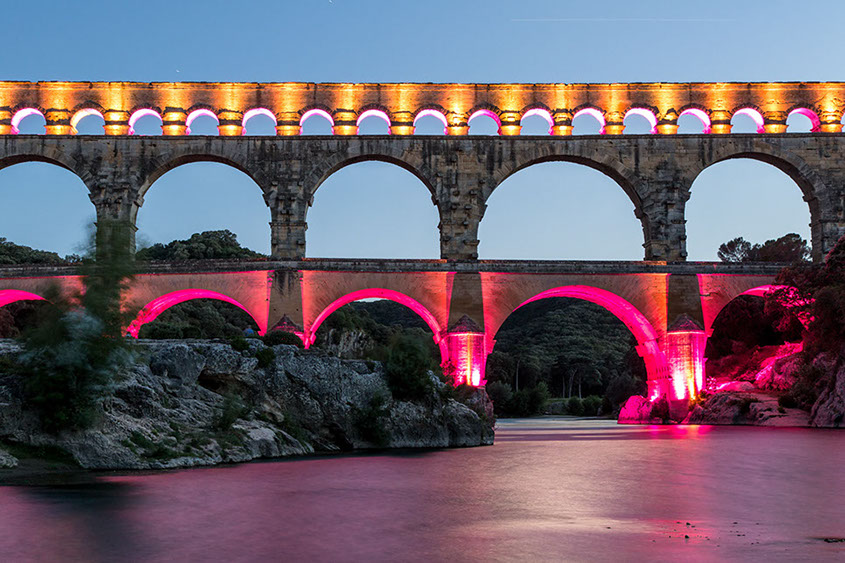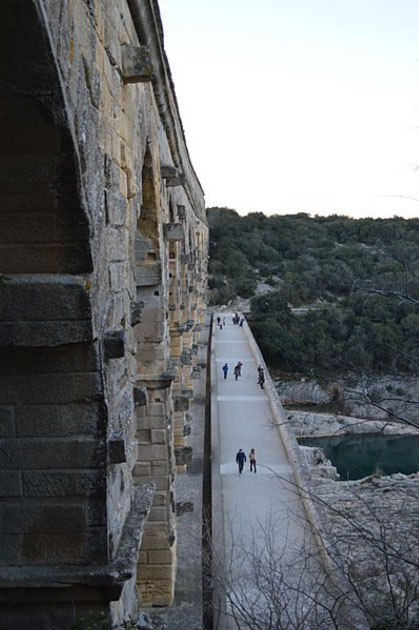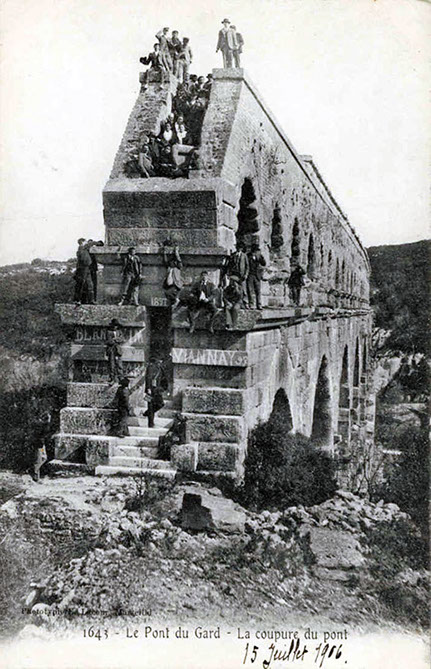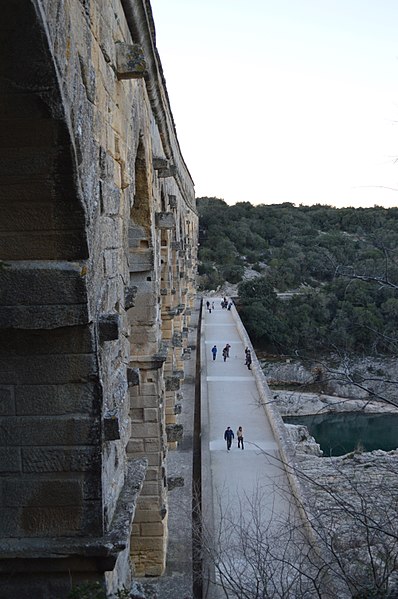
The construction of the aqueduct has been accredited to Augusto son in law and an aistant, Marco Vipsanio Agripa, around the year 19 to C. At that time, he served as mayor, the high magistrate responsible for the management of water supply in Rome and your colonies. The most recent excavations, however, suggest that construction may have taken place between 40 and 60 AD.
Tunnels that date from the time of Augustus had to be left aside by the builders of the aqueduct of Nimes, and coins discovered at the exit of Nimes are no older than the reign of Emperor Claudius (41-54 AD). On this basis, a team led by Guilherm Fabre has argued that the aqueduct must have been completed by the middle of the first century. It is believed that some fifteen years have been taken for construction that I employ 800 and 1000 workers
From the 4th century on, the maintenance of the aqueduct was neglected in successive waves of invaders that burst the region, obstructing it with debris, incrustations and roots of the plants, reducing the flow of water. The deposits originated in the duct consisting of layers of organic matter dirt are up to 50 cm thick in each wall. However, it seems to have followed the supply of water to Nimes until as late as the ninth century.
At the eastern end of the Pont de Gard, since 1891 the stairs installed by Charles Laisné have been displayed to allow visitors to enter the canal.
Although some of its stones we
re sacked for use elsewhere, the Pont du Gard remained almost intact. Its survival is due to its use as a toll bridge over the valley. In the thirteenth century the king of France granted the lords of Uzes the right to collect tolls from those who used the bridge.
The right happened later to the bishops of Uzes. In return, they were responsible for keeping the bridge in good condition. However, it suffered serious damage during the decade of 1620 when Henry, Duke of Rohan, used the bridge to transport artillery during the wars between the French royalists and the Huguenots, whom he took to make room for his artillery to cross the bridge,
The Duke cut the second row of arches to a depth of about one third of its original thickness on one side. This left an egg on the inside floor wide enough to accommodate the cars and cannons, but weakened the bridge.
In 1702 the local authorities renewed the bridge by repairing its cracks, filling up furrows and replacing the stones lost in the previous century. A new bridge was built by engineer Henri Pitot between 1743 and 1747, next to the lower level arches, so that the traffic could cross over the specially designed bridge.
The novelist Alexandre Dumas was very critical of the construction of the new bridge when he commented that it was reserved for the eighteenth century, dishonoring a monument that the barbarians of the fifth had not dared to destroy.
However, the Pont du Gard continued to deteriorate, and by the time of Prosper Merimee, in 1835 it was seen that it was in serious risk of collapse by erosion and the loss of stones.
Napoleon III, who had a great admiration for all Roman things, visited the Pont du Gard in 1850 and became very interested in it. This is in accordance with the plans of the architect Charles Laisné to repair the bridge in a project that took place between 1855 and 1858 with funds provided by the ministry of the state.
The work involved substantial reforms that included the replacement of eroded stone, filling some of the concrete pillars to help stability and improving drainage by separating the aqueduct bridge to help stability and improve drainage by separation, which allowed visitors to walk along the same conduit in reasonable safety conditions.
There have been a series of subsequent projects to consolidate the pillars and arches of the Pont du Gard that has survived three serious floods in the last century; in 1958 the entire lower tier was submerged by the giant flood that razed other bridges, and in 1998 another large flood affected the area. One more flood hit 2002, causing severe damage to nearby facilities.




BRIDGE OF GARD
reconstruction












